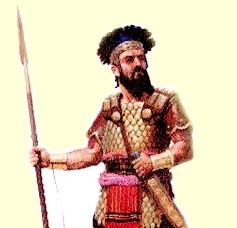To justify the enslavement of people of African descent, many Europeans have used the Bible to condone the vile practice of slavery.
Although many of the nations that traded in slaves were from Christian nations, they used the Scriptures to legitimize and sanction the inhumanities of the slave trade.
By implying that Hamitic people were to be enslaved, they distorted what the Bible actually stated. However, let us examine the Scriptures and see what it actually says on the subject.
The background information leading up to the curse is found in Genesis 9:20-24. In Genesis 9:24, Noah calls Canaan, his youngest son; that was because there was no word for grand-father or grand-mother, and any child born to a son or daughter was referred to as the son or daughter of the grand-parent.
This rule still applies in many African cultures today. In Genesis 9:25, we read: “Cursed be Canaan, Let him be the lowest slave to his brothers.” This curse was not made against Ham, the progenitor of the black race; it was against his son, Canaan and his progeny.
Canaan was the father of Sidon and Heth and the ancestor of the Jebusites, the Amorites, the Girgashites, the Hivites, the Arkites, the Sinite, the Arvadite, the Zemarite and the Hamathite, all Canaanite clans, living in the areas of Palestine, Syria, Jordon, Israel and Lebanon in the Fertile Crescent. Bible prophesy against the Canaanites was to have its fulfillment four hundred years later (Gen. 15:16), when the majority of Canaanite nations were eventually annihilated.
This was in fulfillment of the promise made to Abraham, that his progeny would inherit the promised land (Ge.12: 7), a prime agricultural area. Compare Numbers 13:23. The Canaanites were primarily crop and animal farmers who believed that the fertility of their land was due to Baal, one of the god’s they worshipped.
During the months of April to September, the land of Palestine was very dry and they believed that Mot, the god of death and aridity had triumphed over Baal, who was their god of rain and fertility.
To stir Baal into action the Canaanites engaged in prescribed rituals and magic to ensure that they would have an abundance of food and livestock the following year.
Their fertility rites included sexual orgies, and male and female temple prostitution. Other components of Baal worship included child sacrifices.
The Armana letters, found in 1887, contains correspondences between Canaanite rulers and Pharaohs’ Amenhotep lll (c.1538—c.1501) and Akhenaton (c. 1501-c.1474). Egypt at that time was the dominant world power; however, they allowed the Canaanites to rule as vassal kings over their internal affairs.
In Egyptian tomb paintings, their multi-coloured garments easily identify the Canaanites who called themselves Kinaai while the Greeks named them Phoenicians. The curse issued upon Canaan was partly fulfilled when the Hebrews subjugated them.
The tribes, who because of their trickery were saved from destruction, were set to work as forced labour, gathering wood and water for the Hebrews. Jos. 9.1-27. Later, the Canaanites came under the dominant power of Japhetic rule by the Medo-Persians, Greeks and Romans in fulfillment of the Bible prophecy.
Therefore, European enslavement of African people had nothing whatsoever to do with the fulfillment of Bible Prophecy.
The Bible contains the early history of people. Commencing in 1513 B.C.E. it contains information about where people migrated to and the places that later became their ancestral homes.
It mentions many interactions with people of Hamitic origin living in parts of Africa, Arabia, ancient Babylon and the Mediterranean. Moreover, closer examination of its contents places people of African descent firmly in the picture.





